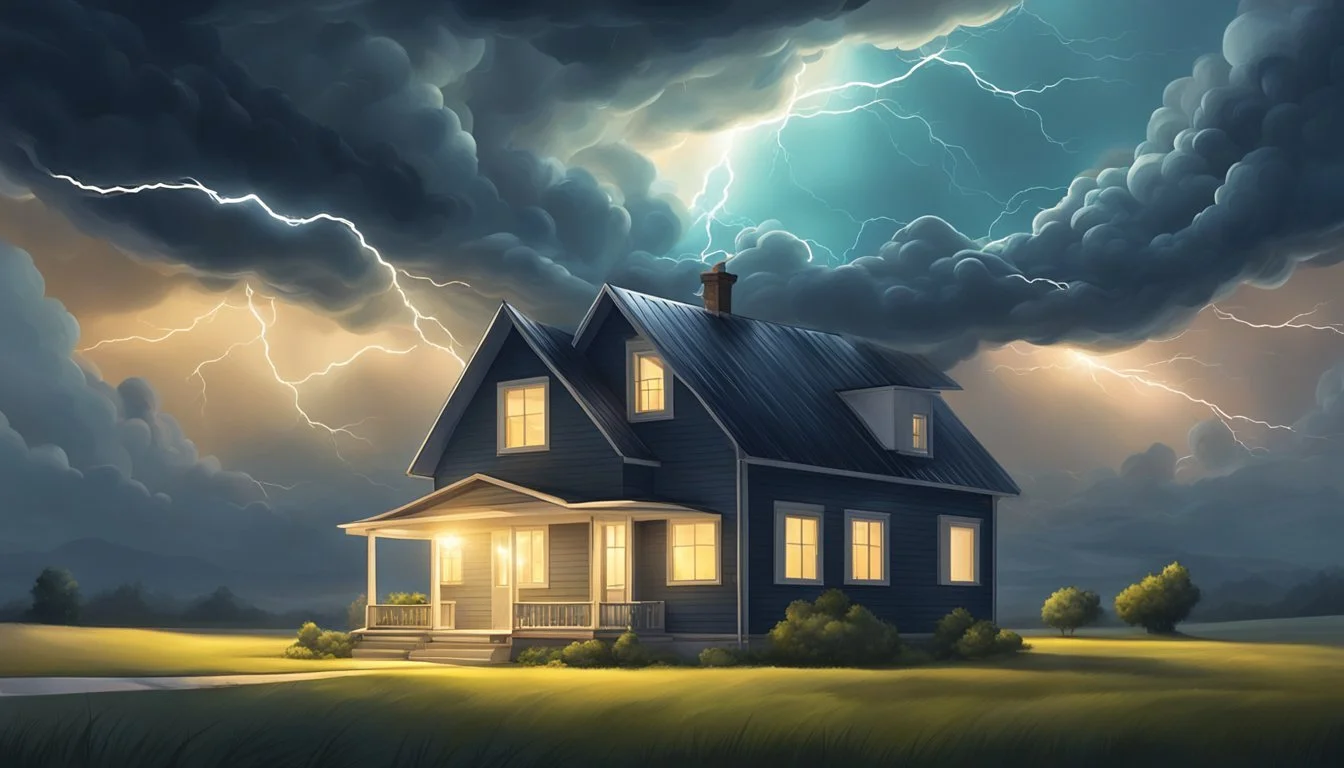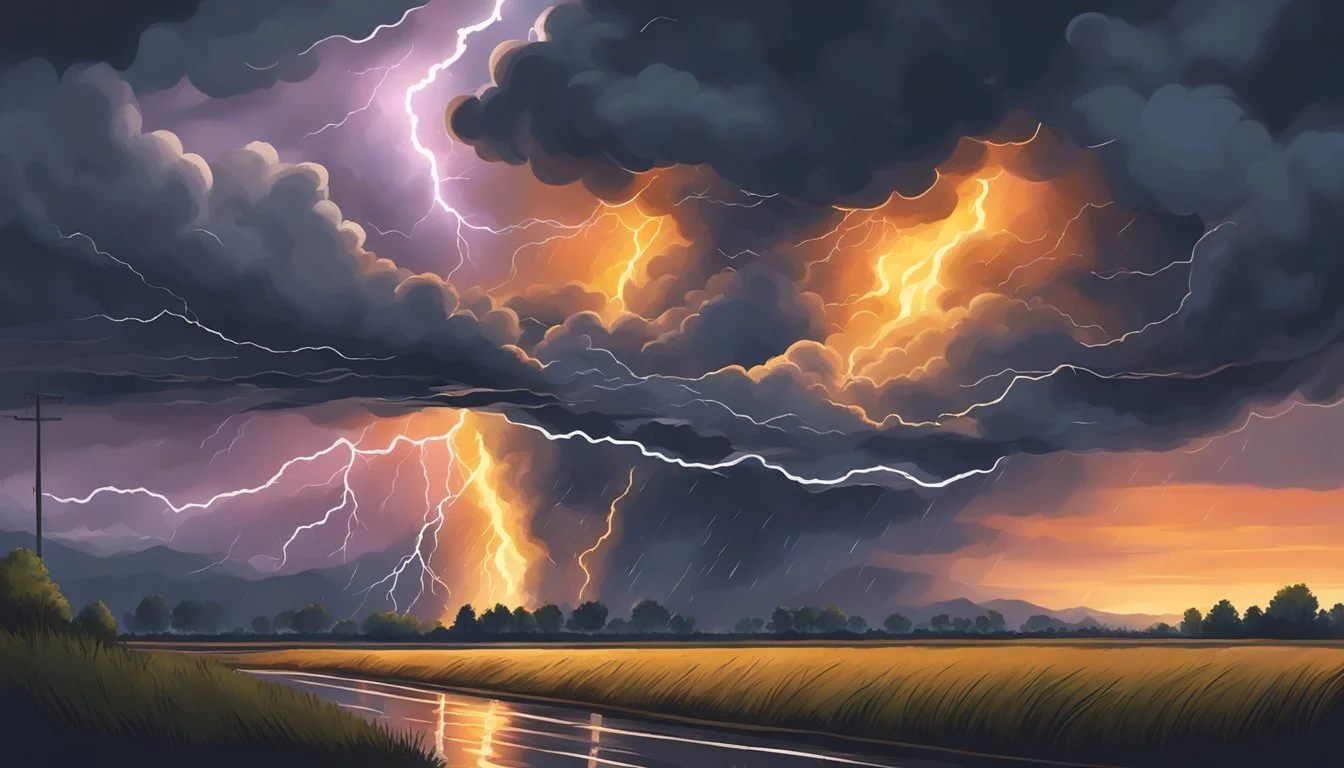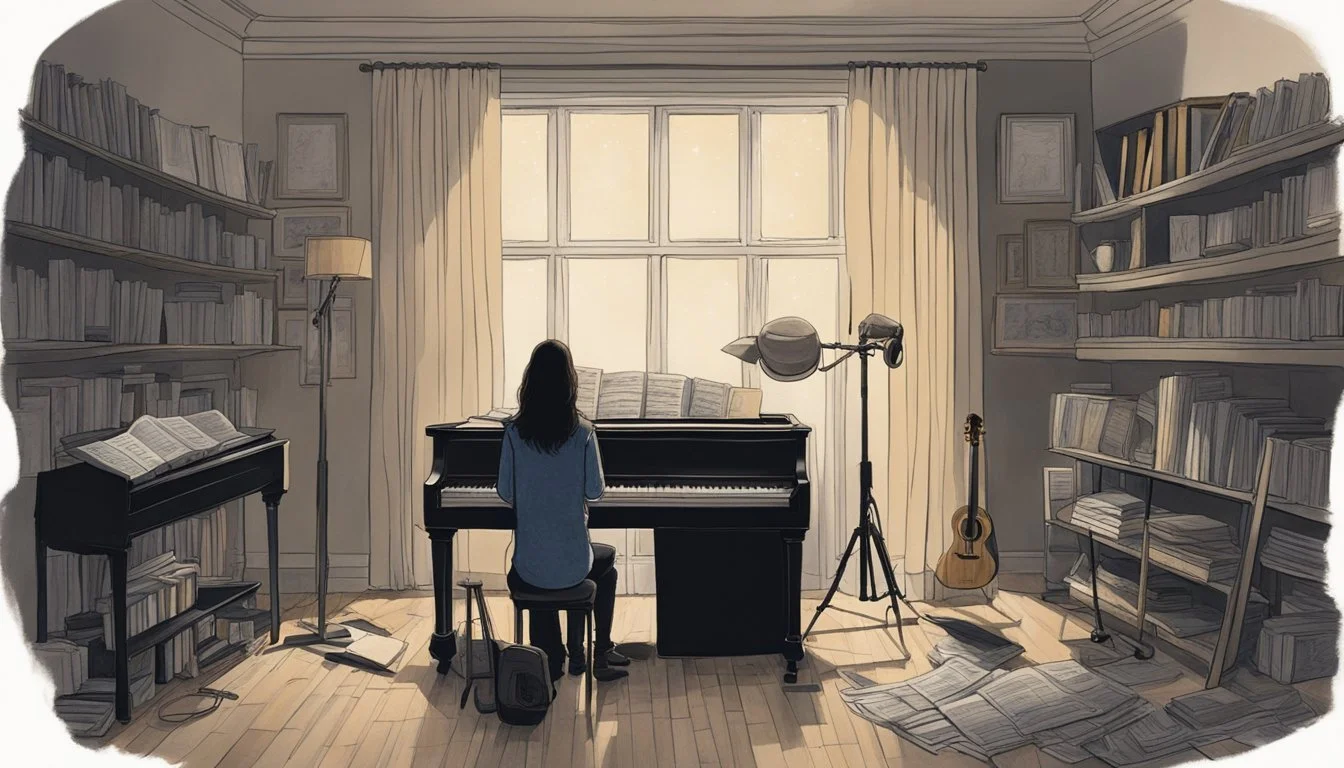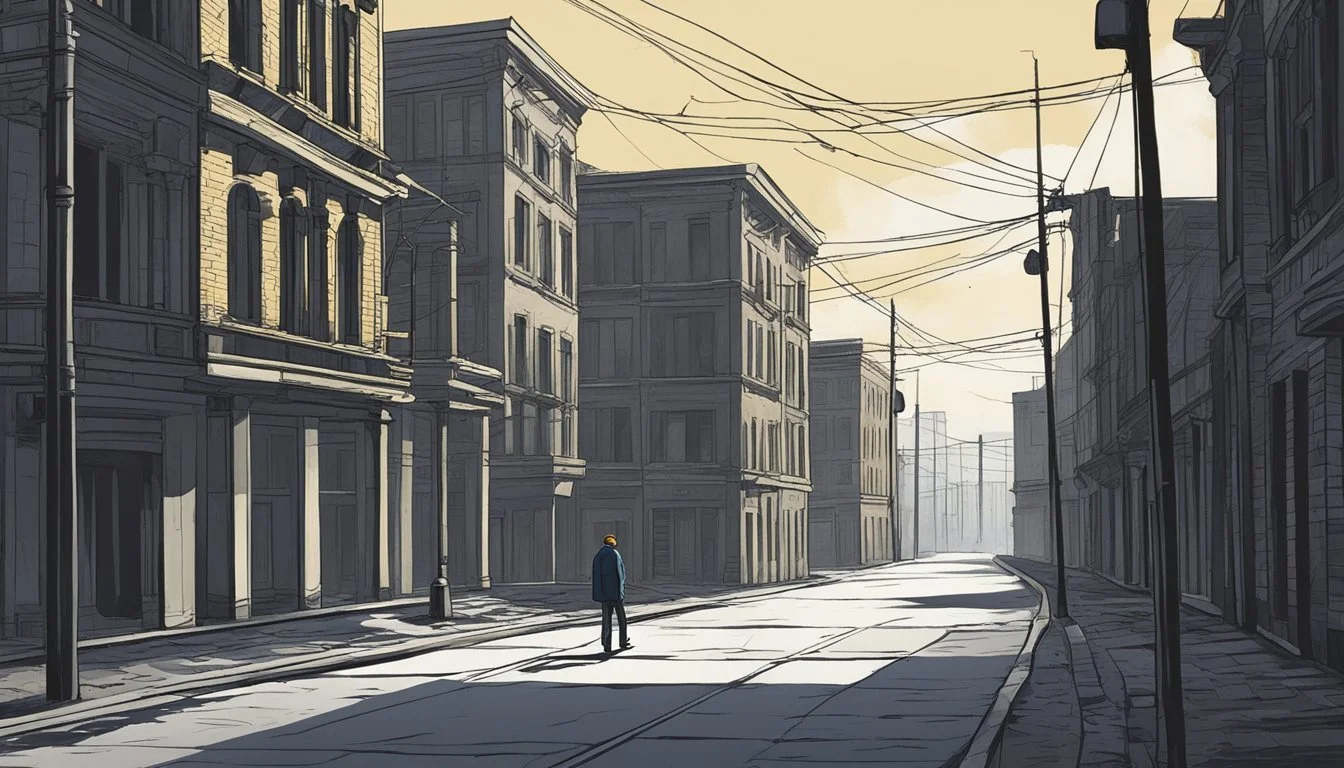15 Songs That Capture the Experience of Bipolar Disorder
A Musical Journey Through Mood Swings
Music has long been a powerful medium for expressing complex emotions and experiences. For those living with bipolar disorder, certain songs can resonate deeply, capturing the unique challenges and feelings associated with this mental health condition. These tracks often provide comfort, understanding, and a sense of connection for individuals navigating the highs and lows of bipolar disorder.
Songs about bipolar disorder can serve as a source of validation and support for those affected by the condition. By exploring themes of mood swings, struggles with identity, and the search for stability, these musical works offer listeners a way to process their own experiences. From indie rock to pop ballads, artists across various genres have contributed to a growing collection of songs that shed light on the realities of living with bipolar disorder.
1) Manic Monday by The Bangles
"Manic Monday" by The Bangles, released in 1986, captures the frantic energy often associated with bipolar disorder's manic episodes. The song's upbeat tempo and catchy melody belie its lyrics about stress and overwhelm.
Prince wrote the track under the pseudonym "Christopher," drawing on his keen understanding of human emotions. The song's protagonist struggles with the transition from a relaxed Sunday to a hectic workweek.
The lyrics describe racing thoughts and a desire to stay in bed, common experiences for those with bipolar disorder. The chorus expresses a wish to extend the weekend, reflecting the difficulty many face in managing daily responsibilities during mood episodes.
While not explicitly about bipolar disorder, "Manic Monday" resonates with listeners who experience rapid mood shifts and heightened anxiety. The song's enduring popularity stems from its relatable portrayal of stress and the longing for respite.
The Bangles' energetic performance adds to the song's impact, conveying the frenetic pace of a manic episode through their musical delivery.
2) Lithium by Nirvana
"Lithium" by Nirvana is a seminal track that explores the complex emotions associated with bipolar disorder. Released in 1991, the song became an anthem for those grappling with mental health challenges.
Kurt Cobain's lyrics capture the duality of manic and depressive states. The chorus, "I'm so happy 'cause today I found my friends, they're in my head," reflects the euphoria of mania and the isolation often felt by those with bipolar disorder.
The song's title refers to lithium, a common medication used to treat bipolar disorder. This reference adds depth to the narrative, highlighting the role of pharmaceutical interventions in managing the condition.
Cobain's delivery alternates between soft, almost whispered verses and explosive choruses. This vocal technique mirrors the sudden mood shifts experienced by individuals with bipolar disorder.
"Lithium" resonates with listeners due to its raw honesty and emotional intensity. It has become a touchstone for discussions about mental health in popular music, helping to reduce stigma and increase understanding of bipolar disorder.
3) Gimme Shelter by The Rolling Stones
"Gimme Shelter" by The Rolling Stones captures the intense emotional turbulence often experienced in bipolar disorder. Released in 1969, the song's urgent, driving rhythm and dark lyrics reflect a world in turmoil.
The opening guitar riff creates an immediate sense of tension and unease. This musical atmosphere mirrors the unsettling feelings that can accompany manic or depressive episodes.
Mick Jagger's vocals alternate between controlled verses and more frantic choruses, echoing the mood swings characteristic of bipolar disorder. The repeated plea for shelter represents a desire for stability and safety amid chaos.
Merry Clayton's powerful backing vocals add another layer of intensity. Her raw, emotional performance conveys the overwhelming nature of bipolar symptoms.
The song's themes of war, violence, and apocalyptic imagery align with the extreme thoughts and perceptions that can occur during manic states. These vivid, sometimes frightening ideas contrast sharply with periods of normalcy.
"Gimme Shelter" effectively captures the roller coaster of emotions and sensations associated with bipolar disorder. Its enduring impact stems from its ability to convey complex psychological states through music and lyrics.
4) Basket Case by Green Day
"Basket Case" by Green Day is a punk rock anthem that resonates with many people experiencing bipolar disorder. Released in 1994 on their album "Dookie," the song explores themes of anxiety, paranoia, and mental instability.
The lyrics vividly describe the narrator's inner turmoil and confusion. The opening lines "Do you have the time to listen to me whine?" set the tone for a candid exploration of mental health struggles.
Billie Joe Armstrong's frantic vocal delivery captures the manic energy often associated with bipolar disorder. The fast-paced instrumentation mirrors the racing thoughts and heightened emotions experienced during manic episodes.
The chorus, "I'm a basket case," directly references mental health terminology. This blunt self-assessment reflects the self-awareness many individuals with bipolar disorder develop about their condition.
"Basket Case" gained significant popularity and helped bring discussions about mental health into mainstream music. Its lasting impact demonstrates the power of music to articulate complex emotional experiences.
5) Unwell by Matchbox Twenty
"Unwell" by Matchbox Twenty captures the essence of living with bipolar disorder. Released in 2003, the song resonated with many listeners experiencing mental health challenges.
Lead singer Rob Thomas penned lyrics that vividly describe the inner turmoil of someone grappling with their mental state. The chorus acknowledges feeling "a little unwell" while reassuring that it's temporary.
The song's upbeat melody contrasts with its introspective lyrics, mirroring the complex emotions often associated with bipolar disorder. This juxtaposition reflects the highs and lows characteristic of the condition.
Lines like "I'm talking to myself in public" and "I'm not crazy, I'm just a little unwell" encapsulate the self-awareness and stigma many individuals with bipolar disorder face. The song validates these experiences and offers a sense of solidarity.
"Unwell" has become an anthem for those navigating mental health challenges. Its honest portrayal of vulnerability and resilience continues to resonate with listeners, providing comfort and understanding to those affected by bipolar disorder.
6) I Go To Extremes by Billy Joel
"I Go To Extremes" by Billy Joel captures the essence of bipolar disorder's emotional rollercoaster. Released in 1989 on his album Storm Front, the song reflects the intense mood swings characteristic of the condition.
Joel's lyrics paint a vivid picture of the ups and downs experienced by those with bipolar disorder. He sings about feeling "totally cool" and "in the prime of my life" one moment, then "going too fast" the next.
The chorus emphasizes the extremes, with Joel declaring he's "always too high or too low" and "never sure which way I'm going." This accurately depicts the sudden shifts between manic and depressive episodes.
While Joel wrote the song as an apology to his then-wife Christie Brinkley for his erratic behavior, its themes resonate strongly with the bipolar experience. The energetic piano-driven melody mirrors the frenetic nature of manic episodes.
"I Go To Extremes" serves as a powerful musical representation of bipolar disorder's impact on daily life and relationships. Its honest portrayal of emotional instability continues to strike a chord with listeners affected by the condition.
7) Runaway Train by Soul Asylum
"Runaway Train" by Soul Asylum, released in 1993, captures the emotional turmoil often experienced by individuals with bipolar disorder. The song's lyrics depict feelings of confusion, isolation, and a sense of being lost.
The metaphor of a runaway train aptly represents the uncontrollable nature of bipolar episodes. It symbolizes the rapid thoughts and intense emotions that can overwhelm a person during manic or depressive states.
The song's chorus, "Runaway train never going back, wrong way on a one-way track," reflects the helplessness and lack of control that many with bipolar disorder feel. It emphasizes the difficulty of breaking free from destructive patterns.
Soul Asylum's emotive vocals and melancholic melody further reinforce the song's themes of struggle and despair. The power ballad's introspective lyrics resonate with listeners who have experienced mental health challenges.
"Runaway Train" gained additional significance through its music video, which featured images of missing children. This connection underscores the song's broader themes of loss and the search for stability.
8) On A Plain by Nirvana
"On A Plain" by Nirvana, released in 1991, offers insight into the complex emotional landscape of bipolar disorder. The song's lyrics reflect the disorientation and internal conflict often experienced by those with the condition.
Kurt Cobain's introspective writing style shines through in lines like "I'm on a plain, I can't complain." This sentiment captures the emotional numbness that can occur during certain phases of bipolar disorder.
The track's shifting dynamics mirror the mood swings associated with the condition. Quiet verses build to explosive choruses, mirroring the sudden transitions between depressive and manic states.
Cobain's delivery alternates between apathy and intense emotion, further emphasizing the bipolar experience. His raw vocals convey the frustration and confusion that often accompany the disorder.
While not explicitly about bipolar disorder, "On A Plain" resonates with many who live with the condition. Its exploration of conflicting emotions and states of mind makes it a powerful representation of the bipolar experience in music.
9) Mad World by Gary Jules
"Mad World" by Gary Jules offers a poignant portrayal of the emotional landscape often experienced by those with bipolar disorder. The song's melancholic tone and introspective lyrics resonate deeply with the feelings of isolation and detachment common in bipolar episodes.
Jules' haunting vocals convey a sense of emotional numbness, reflecting the depressive states associated with the condition. The lyrics "All around me are familiar faces / Worn out places, worn out faces" capture the feeling of disconnection from one's surroundings.
The song's chorus highlights the conflicting emotions often present in bipolar disorder. The lines "I find it kind of funny, I find it kind of sad / The dreams in which I'm dying are the best I've ever had" echo
10) True Colors by Cyndi Lauper
"True Colors" by Cyndi Lauper reflects the experience of bipolar disorder through its lyrics and emotional depth. Released in 1986, the song encourages self-acceptance and authenticity.
The lyrics describe seeing someone's true self shine through, even in difficult times. This resonates with the fluctuating moods of bipolar disorder, where a person's essence can be obscured by their symptoms.
Lauper sings about darkness making one feel small, mirroring the depressive episodes of bipolar disorder. The chorus offers hope and support, reminding listeners their true selves are beautiful.
The song's message of unconditional love and acceptance is particularly relevant for those with bipolar disorder. It emphasizes the importance of compassion and understanding during both manic and depressive phases.
"True Colors" became an anthem for various communities, including LGBTQ+ rights. Its broader themes of self-acceptance and resilience apply to many experiences, including living with bipolar disorder.
11) Fire and Rain by James Taylor
James Taylor's "Fire and Rain" offers a poignant glimpse into the emotional turmoil often associated with bipolar disorder. Released in 1970, this introspective ballad draws from Taylor's personal experiences with depression and substance abuse.
The song's lyrics touch on themes of loss, struggle, and healing. Taylor wrote much of the track during a stay in a psychiatric hospital, reflecting the intense emotions that can accompany mental health challenges.
Each verse of "Fire and Rain" explores different aspects of Taylor's life, including the loss of a friend and his battles with addiction. These elements resonate with many individuals who have faced similar struggles in their own bipolar journeys.
The song's gentle melody contrasts with its weighty subject matter, mirroring the complex emotional landscape of bipolar disorder. Its raw honesty struck a chord with listeners, becoming one of Taylor's most iconic works.
"Fire and Rain" continues to be celebrated for its authentic portrayal of mental health struggles. It serves as a powerful reminder of the importance of addressing and understanding bipolar disorder and other mental health conditions.
12) Fade Into You by Mazzy Star
"Fade Into You" by Mazzy Star captures the ethereal and introspective nature of bipolar disorder. The song's dreamy atmosphere mirrors the hazy, disconnected feeling often experienced during depressive episodes.
Hope Sandoval's haunting vocals convey a sense of emotional numbness and detachment. This resonates with individuals struggling with bipolar disorder who may feel isolated from their surroundings and loved ones.
The lyrics "I want to hold the hand inside you" express a longing for connection and understanding. This reflects the desire of those with bipolar disorder to be truly seen and accepted, even in their most vulnerable states.
The song's slow, hypnotic tempo echoes the sluggishness and lethargy common in depressive phases. Conversely, the swelling instrumentation can be interpreted as representing the gradual build-up to manic episodes.
"Fade Into You" has become a cultural touchstone, featured in numerous films and TV shows. Its enduring popularity speaks to its ability to articulate complex emotions that many find difficult to express.
13) Somewhere Only We Know by Keane
Keane's "Somewhere Only We Know" resonates with the bipolar experience through its emotional depth and longing for stability. The song's melancholic piano melody and introspective lyrics capture the essence of seeking refuge from emotional turbulence.
The track's opening lines, "I walked across an empty land, I knew the pathway like the back of my hand," evoke a sense of familiarity am
14) Creep by Radiohead
"Creep" by Radiohead is a powerful anthem that resonates with many individuals experiencing bipolar disorder. Released in 1992, the song explores themes of self-loathing, alienation, and inadequacy.
Thom Yorke's haunting vocals capture the intense emotional lows often associated with bipolar depression. The lyrics express feelings of not belonging and being an outsider, which many with bipolar disorder can relate to during depressive episodes.
The song's dynamic shifts between quiet verses and explosive choruses mirror the mood swings characteristic of bipolar disorder. This musical structure effectively conveys the emotional turbulence experienced by those with the condition.
While not explicitly about bipolar disorder, "Creep" touches on universal feelings of self-doubt and isolation. These emotions are often amplified in individuals struggling with bipolar disorder, making the song particularly poignant for them.
The enduring popularity of "Creep" speaks to its ability to articulate complex emotions. For many with bipolar disorder, the song provides a cathartic outlet and a sense of connection through shared experiences.
15) Eleanor Rigby by The Beatles
"Eleanor Rigby" by The Beatles explores themes of loneliness and isolation, which can resonate with those experiencing bipolar disorder. The song's haunting melody and poignant lyrics paint a vivid picture of two solitary figures: Eleanor Rigby and Father McKenzie.
Eleanor Rigby represents individuals who struggle with depression, a common aspect of bipolar disorder. The lyrics describe her as someone who "lives in a dream," possibly alluding to the disconnection from reality that some may feel during depressive episodes.
Father McKenzie symbolizes the often-overlooked support systems for those with mental health challenges. His efforts to help seem futile, mirroring the frustration that both patients and caregivers may experience when dealing with bipolar disorder.
The repeated refrain "All the lonely people" emphasizes the social isolation that can accompany bipolar disorder. This isolation may stem from stigma or the individual's difficulty in maintaining relationships during mood swings.
The song's somber tone and stark imagery capture the emotional weight of living with bipolar disorder. It serves as a powerful artistic representation of the loneliness and societal disconnection that many individuals with this condition may face.
Understanding Bipolar Disorder
Bipolar disorder is a complex mental health condition characterized by extreme mood swings. It affects millions of people worldwide and can significantly impact daily functioning and quality of life.
Types of Bipolar Disorder
Bipolar disorder is classified into several distinct types. Bipolar I involves manic episodes lasting at least 7 days, often requiring hospitalization. Depressive episodes may also occur.
Bipolar II features less severe manic episodes called hypomania, along with depressive episodes. Cyclothymic disorder involves frequent mood swings that don't meet the criteria for full manic or depressive episodes.
Some individuals experience rapid cycling, with four or more mood episodes in a year. Others may have mixed features, where manic and depressive symptoms occur simultaneously.
Symptoms and Diagnosis
Manic symptoms include increased energy, decreased need for sleep, and risky behavior. Depressive symptoms involve fatigue, loss of interest in activities, and thoughts of death or suicide.
Diagnosis requires a comprehensive evaluation by a mental health professional. This includes a detailed history, physical exam, and sometimes blood tests to rule out other conditions.
Mood charting can help track symptoms over time. Bipolar disorder often co-occurs with other mental health conditions, complicating diagnosis.
Early diagnosis and treatment are crucial for managing symptoms and improving long-term outcomes. With proper care, many people with bipolar disorder lead fulfilling lives.
The Connection Between Music and Mental Health
Music profoundly impacts mental health and well-being. It has the power to alter moods, evoke emotions, and provide therapeutic benefits for various mental health conditions, including bipolar disorder.
How Music Influences Mood
Music directly affects brain chemistry and neural activity. Upbeat songs can trigger the release of dopamine, a neurotransmitter associated with pleasure and reward. This boost in mood can be particularly beneficial for those experiencing depressive episodes.
Conversely, slower, more melancholic music may resonate with individuals in low mood states. This emotional mirroring can validate feelings and provide a sense of understanding.
Certain rhythms and tempos can influence heart rate and breathing patterns. Fast-paced music may increase arousal and energy levels, while slower compositions can induce relaxation and calmness.
Music's ability to evoke memories and associations also plays a role in mood regulation. Familiar songs can transport listeners to positive emotional states linked to past experiences.
Therapeutic Benefits of Music
Music therapy has shown promising results in managing symptoms of bipolar disorder and other mental health conditions. Engaging with music through listening, creating, or performing can provide emotional outlets and coping mechanisms.
Active music-making, such as playing instruments or singing, can improve focus and reduce anxiety. It offers a healthy way to express intense emotions often associated with bipolar disorder.
Rhythmic auditory stimulation, a technique using steady musical beats, can help stabilize mood fluctuations. This approach may assist in regulating sleep patterns, which are often disrupted in bipolar disorder.
Group music activities foster social connections and reduce feelings of isolation. Participating in choirs or music groups can provide a sense of community and support for individuals managing mental health challenges.
Music's non-verbal nature makes it an accessible form of emotional expression for those who struggle to articulate their feelings verbally. This can be particularly valuable during manic or depressive episodes.









